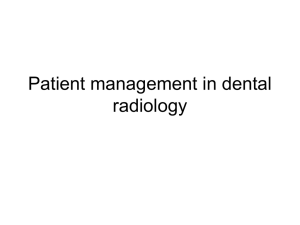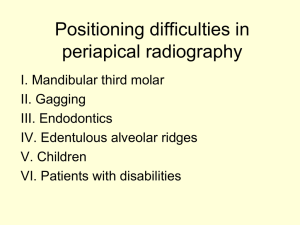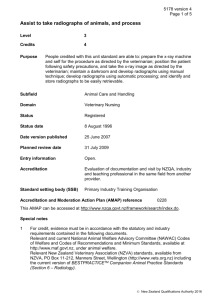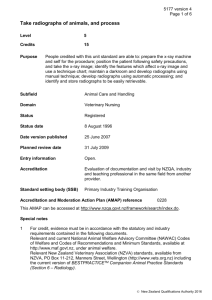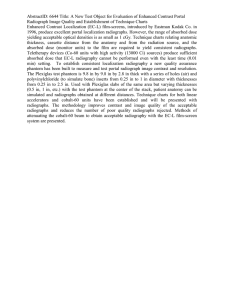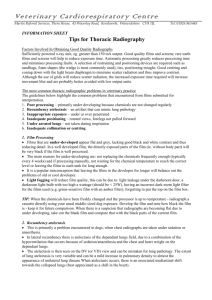Quality Assurance Program in MFOR
advertisement
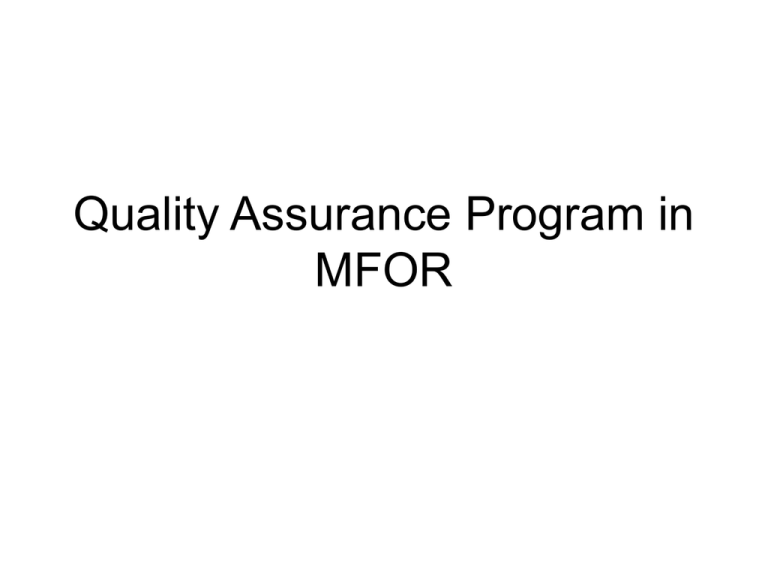
Quality Assurance Program in MFOR Definition • “An organised effort by the staff operating a facility to ensure that the diagnostic images produced by the facility are of sufficiently high quality so that they consistently provide adequate diagnostic information at the lowest possible cost and with the least possible exposure of the patient to radiation.” Terminology • Quality control- the specific measures for ensuring and verifying the quality of the radiographs produced. • Quality audit- the process of external reassurance and assessment that quality control and quality assurance mechanism are satisfactory and that they work effectively Quality control procedures • Image quality and film reject analysis • Patient dose and x-ray equipment • Darkroom, image receptors and processing • Working procedures • Staff training and updating • Audits Image quality • High standard reference film • A formal analysis of film quality every 6 months ( Guidelines for subjective quality rating of radiographs) • Performance targets Film reject analysis • Date • Nature of the film fault • Cause of the error and corrective actions taken • Number of repeat radiographs • Percentage of faulty radiographs taken Patients dose and X-ray equipment • The initial critical examination and report - carried out by the installer • The acceptance test – carried out by the radiation protection advisor • A re- examination report – following any repair that may have radiation protection implications • Day- to –day checks of: - warning lights and audible alarms - satisfactory performance of the counterbalance • Written records and an equipment log should be maintained Darkroom, image receptors and processing I. Darkroom • General cleanliness( daily) • Light-tightness( yearly) • Safelights (yearly) - Type of filters - Condition of filters - Wattage of the bulb - Coin test Image receptors requirements • X-ray film - Ideal storage conditions - Strict stock control - Careful handling Cassettes • Regular cleaning of intensifying screens • Regular checks for light-tightness • Regular checks for film/screen contact Digital phosphor storage plates • Regular cleaning • Regular visual checks for scratches or other defects Processing • Chemical solutions - Always made up to the manufacturers’ instructions- fill the fixer tank first -Always at the correct temperature -Changed or replenished regularly -Monitor for deterioration- step-wedge phantom Processing equipment • Manual processing- using accurate timers, thermometers and immersion heaters • Automatic processing- regular replenishment and regular cleaning of the rollers • Record log Working procedures • Local rules- essential for the safe use of Xray equipment • Operational procedures of work- all actions that indirectly affect radiation safety and diagnostic quality • Procedures log Staff training and update • A register for the staff involved in dental radiography: - Name - Responsibility - Date, nature and details of training received - Recommended date for a review of training needs Audits • Clinical audits may include - The QA programme and associated records - The justification and authorisation of radiographs - The appropriateness of requests - The clinical evaluation of radiographs
